Modern 21st-Century Sustainable Fuel and Energy Solutions

Here are a few greener, cleaner, sustainable options to petrol for transportation fuel>>>
Electrifying Transportation
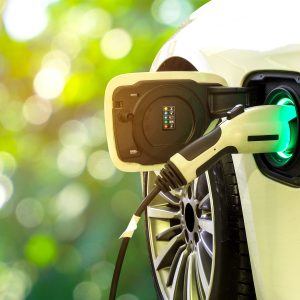 Electric vehicles (EVs) produce zero tailpipe emissions.
Electric vehicles (EVs) produce zero tailpipe emissions.
The end-use of an EV is undoubtedly environmentally friendly (the complete lifecycle of an EV is not entirely environmentally friendly - such as the resource-intensive EV manufacturing process, however, overall EVs are much greener than conventional petrol-fueled vehicles). The actual driving of an EV is substantially cleaner than conventional vehicles.
The variety and assortment of electric vehicles in the mass markets throughout the world today is plentiful and still growing.
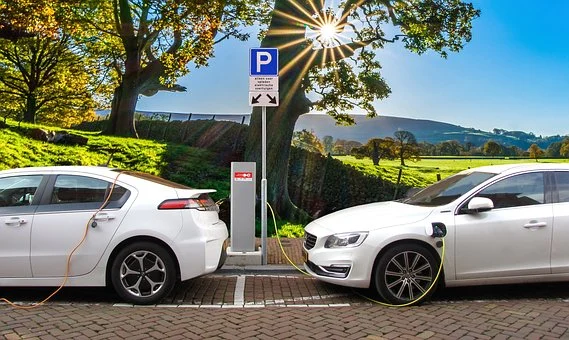 There is a vast selection of light EV options today on the mass market globally, such as hundreds of models of electric cars and trucks available worldwide.
There is a vast selection of light EV options today on the mass market globally, such as hundreds of models of electric cars and trucks available worldwide.
Growth in the global EV market will continue to rise.
EVs still have a long way to go to become widely commercially available in the heavy-duty truck and shipping markets, although electric buses are increasingly available.

For cities, electric mass transit options today include electric and hybrid-electric buses, electric light rail (including trams and streetcars), rapid transit rail, all-electric commuter rail lines, and other electric mass transit options (such as monorail lines and high-speed rail).
These electric mass transit options combine the best of two worlds - the greatly reduced transit impacts on cities that come with mass transit (less traffic congestion, less environmental pollution, etc...) and the zero emissions of EVs.
Please also see: 10 Countries Advancing the Use of EVs
and EVs to be the Main Cars on the World's Roads
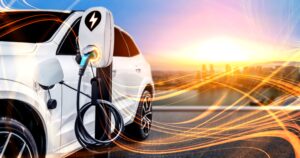 Electric vehicles and plug-in hybrids work on battery power and are charged through an external electric source (see Electric Vehicles, Hybrids, and Plug-in Hybrids).
Electric vehicles and plug-in hybrids work on battery power and are charged through an external electric source (see Electric Vehicles, Hybrids, and Plug-in Hybrids).
The batteries used in EVs drive electric motors without combustion or pollution. However, they do require electricity from a utility, which is sent through the municipal grid (unless charged with renewable energy at home, usually in the form of electricity produced by solar panels), and then that electricity powers the EV's battery.
Clean sources that ultimately (through the municipal grid) provide an EV's electricity include renewable and nuclear energy (the major low carbon energy sources available today). On the other hand, if an EV gets its electricity from a fossil fuel-heavy grid, the EV is still powered by fossil fuels (to the extent corresponding to the share of fossil fuels on the grid).
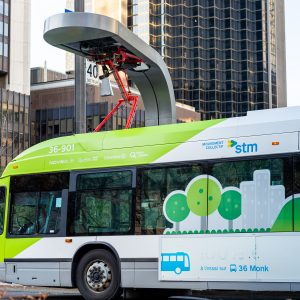
The same is true for all electric mass transit in a city; electric transit options are only as green and clean as their energy source.
It is technically possible to electrify any type of transportation vehicle.
For example, electric vehicles can also be in the form of electric ships (many types of ships are being electrified). A significant share of long-haul heavy-duty trucks and ships are promising vehicle markets to be electrified in the optimistic future of sustainable transit.
Every electric vehicle has the enormous environmental benefit of eliminating greenhouse gas emissions and pollution from the vehicle itself (as technically, EVs eliminate the need for exhaust systems completely).
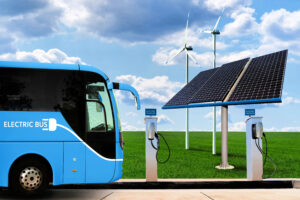 It remains a significant aspirational goal that the sources for the electrical generation used to power electric public mass transit options, as well as ALL EV batteries, are renewable energy sources - to the greatest extent possible.
It remains a significant aspirational goal that the sources for the electrical generation used to power electric public mass transit options, as well as ALL EV batteries, are renewable energy sources - to the greatest extent possible.
Electric vehicles are gaining popularity throughout the world, as more and more countries are incentivizing sustainable vehicles. The global commercial market of EVs is flooded with electric passenger cars and light-duty trucks.
Please see: Benefits of Electric Vehicles, Hybrids, and Plug-in Hybrids
And, for a comprehensive look at both electrifying and implementing renewable energy for mass transit, please also see:
1st, 2nd, and 3rd-Generation Biofuels
Biofuels reduce GHGs from internal combustion engines, producing less tailpipe emissions than conventional petrol-fueled vehicles.
Biofuels are low carbon fuels (ethanol and biodiesel) produced from renewable sources.
Agricultural crops such as corn, sugarcane, soybean, and other starchy crops represent 1st-generation ethanol feedstocks.

Ethanol feedstocks also include cellulosic plants (2nd-generation biofuels - such as various non-food energy crops and grasses, wood biomass, agricultural waste, forestry residues, and other waste streams).
Algae is the source of 3rd-generation biofuels.
All of these feedstocks for biofuels are processed and used to create efficient, environmentally friendly, alternative transportation fuels (ethanol and biodiesel). 2nd and 3rd-generation biofuels represent non-food sources with high-density energy; feedstocks that don't take away from the world's needed food supply.
The most promising new source for the production of biodiesel is algae. Algae might just be the future of biofuel - as it's extremely fast-growing and up to 60% of algae's weight is oil - oil that can be processed into biofuel.
Please read: Renewable Bioenergy: Biomass, Biogas, and Biofuel; Waste-to-Energy
Read more about cellulosic biofuels, and algae (2nd and 3rd generation biofuels):
and:
Cellulosic Biofuel - Fuel Solutions
 Blending ethanol and biodiesel with gasoline and diesel produces a more environmentally friendly fuel (than fuels with just petrol). It is possible to increase octane levels, decrease the quantity of GHGs discharged, and increase the fuel efficiency of transit, using these alternative fuels.
Blending ethanol and biodiesel with gasoline and diesel produces a more environmentally friendly fuel (than fuels with just petrol). It is possible to increase octane levels, decrease the quantity of GHGs discharged, and increase the fuel efficiency of transit, using these alternative fuels.
In the United States, for example, gasoline contains at least 10% ethanol (E10) for the increased fuel efficiency, increase in octane levels, and environmental benefits of blended fuel.
Vehicles that can run on substantial biofuel blends (more substantial than just E10 or E15) are commonly known as hybrid vehicles.
A hybrid vehicle can either be a hybrid that runs biofuels alone, a hybrid that runs on a biofuel blended with gasoline or diesel, a hybrid vehicle that runs on another low carbon fuel source (such as liquified or compressed natural gas), or a hybrid vehicle that runs on a mix of any of the previously-mentioned fuels + a share of electricity.
Vehicles in the hybrid category include vehicles that run on biofuel alone, vehicles that run on biofuel and petrol blends, electric-biofuel hybrid vehicles, electric-gasoline hybrid vehicles, natural gas-fueled hybrids (or even hydrogen-fueled hybrids - see below).
Hybrid vehicles designed to run on biofuels include an increasing global share of:
- - passenger automobiles
- - buses
- - light trucks
- - heavy-duty trucks for industry
- - shipping vessels
- - biofuel blends are even seeing some use on a small number of airlines, as seen in this article
Biodiesel
A type of fuel that's popular in global use for all types of vehicles, due to both its cost-efficiency and its fuel efficiency, is biodiesel (another type of biofuel, in addition to ethanol). Biodiesel has both commonly produced, small-scale versions and industrially produced, large-scale versions.
This type of fuel is made from animal and plant oils, lipids, and fats. Biodiesel is commonly sourced from plant-based cooking oils (mostly sourced from restaurant kitchens, or commercial plant-based oils produced on a large-scale basis for industrial biodiesel production purposes). Plant-based oils are the stock source with the largest share in the mix making up biodiesel.
The plant-based oils used to create biodiesel are processed with an alcohol, such as methanol, and a catalyst, such as lye, (among other processes to make biodiesel from kitchen oil). The biodiesel is blended with traditional diesel (except for B100, which is entirely renewable), and then the biodiesel blend is used in modified engines.
B100 is used to a significant extent in Brazil in public bus fleets.
Biodiesel is a cost-efficient and fuel-efficient alternative for cars, buses, trucks, ships, (and even planes). Biodiesel has industrial production processes which can be similar to the processes mentioned above, but on an industrial scale for large-scale production.
Advanced biofuels use a next-generation source, such as algae, as the main feedstock source for biodiesel. Biodiesel results in an increase in fuel efficiency, and a decrease in air pollutants relative to traditional diesel.
Biofuel Blends
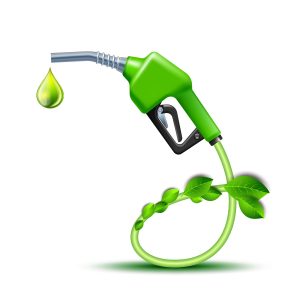 A small level (5%, 10%, 15%) of ethanol or biodiesel can be blended with standard gasoline or diesel to make an efficient fuel blend with less environmental impact (this type of fuel blend is used in many countries worldwide).
A small level (5%, 10%, 15%) of ethanol or biodiesel can be blended with standard gasoline or diesel to make an efficient fuel blend with less environmental impact (this type of fuel blend is used in many countries worldwide).
Just this relatively low level of a biofuel blend in fuels decreases air pollution from vehicles.
A blend of ethanol and traditional gasoline known as E85 - 85% ethanol and 15% gasoline, has gained popularity throughout the world (especially in Northern Europe). E85 (and B100) have significantly higher energy efficiency and lower environmental impacts (greater benefits are seen with B100).
There are many grades of ethanol-based biofuel blends growing in use worldwide, such as E10, E15, and E85. There are also many grades of biodiesel blended fuels growing in global use - such as B5, B20, and B100 (B100 is not a blend, it's a 100% renewable source of fuel).
The engines of hybrid vehicles (hybrid passenger cars, hybrid buses, hybrid light-duty trucks, hybrid heavy-duty trucks, hybrid ships) can be developed to run on numerous types of fuel and also combined to run with electric motors. Hybrid vehicles can run on biofuel and biofuel blends (either ethanol or biodiesel), bio-liquefied natural gas (bio-LNG), or compressed natural gas (bio-CNG).
Often, hybrids run on two systems of fuel/ power, and at different times, such as biofuel-gasoline, gasoline-electricity, diesel-electricity, biofuel-electricity, and bio-LNG/ bio-CNG-electricity.
Many motors/ engines in hybrid vehicles are designed to run on the most efficient fuel/ power source at the time (and some hybrids opt for the greenest options), switching for brief times to internal combustion engines in the vehicle, when optimal.
Biofuels for Aviation
Biofuel is used in transportation, including aviation and shipping on a substantial level; both as the primary fuel source for transportation vehicles (light/ heavy-duty trucks, ships, and aviation), and/ or as part of a biofuel-traditional fuel blend with gasoline and biofuel.
Biofuel needs to be converted into bio-LNG to be effectively used in the transportation sector. A couple of airlines, in particular, represent the present use, and potentially expanded future use, of biofuel blends; and are the subject of this article from Bloomberg - bloomberg.com/airlines-biofuel-powered-flights-take-off.
For years, airlines have experimented with biofuels, aiming to reduce both carbon emissions and their reliance on fossil fuels…several major carriers are planning larger-scale usage of biofuel in 2019 and 2020, including JetBlue Airways Corp.
United Continental Holdings Inc. said it would cut its carbon emissions by half [by using biofuels] compared to 2005 levels, by 2050, matching an industry target set by the International Air Transport Association.
United Airlines uses the most biofuel blends in their airplanes of any airline; after Jet Blue helped to pioneer the use of aviation biofuels; as detailed in an article by Fast Company.
From this Fast Company article – "…biofuel blended jet fuel, with a carbon footprint smaller than regular jet fuel, but a comparable cost – is one way that the airline industry can begin to tackle its climate problem. By mid-century, like other industries, airlines will have to reach net zero emissions for the world to stay on track to meet the goals of the Paris climate agreement.”
Hydrogen for Transportation
A solution that's still mostly in the R&D/ demonstration phase is hydrogen; and hydrogen fuel cells are gaining in practical development for replacing transportation fuel in a few select cases, such as European buses. There are real-world examples of hydrogen mass transit serving world cities today.
The biggest hydrogen fuel cell projects in the Western Hemisphere are Clean Hydrogen in European Cities (CHIC) and H2BusEurope, operating now in several countries throughout Europe. Hydrogen is also a promising future means for energy storage, and a variety of other industrial uses, however, hydrogen still mostly remains in non-commercial R&D for now, as opposed to practical, real-world applications.
Replacing Petrol with Sustainable, Clean Energy Sources
 The negative externalities of discovering, extracting, refining, and consuming oil are extensive. This includes damage to public health/ the environment from the combustion of petrol, and the financial costs to address the damage forced on society by pollution from fossil-fueled vehicles.
The negative externalities of discovering, extracting, refining, and consuming oil are extensive. This includes damage to public health/ the environment from the combustion of petrol, and the financial costs to address the damage forced on society by pollution from fossil-fueled vehicles.
Combustion of refined crude oil (gasoline, diesel, and other petroleum-based fuels such as jet fuel) has a significant negative impact on public health and the environment. [It must be noted that although diesel-fueled vehicles are more energy-efficient than their gasoline-fueled counterparts, they still carry significant negative externalities and GHGs, not the least of which is higher nitrous oxide emissions - a very potent greenhouse gas].
Petroleum combustion poses a risk to the planet in the form of a dramatic increase in greenhouse gas emissions (GHGs), exacerbating climate change. Besides being responsible for GHGs, petrol products are responsible for a significant quantity of hazardous local pollution.
Environmental hazards and pollution stemming from the combustion of petroleum for transportation include toxic air pollutants, particulate pollution, volatile organic compounds, and a range of GHGs and other emissions. The immediate danger of burning petroleum fuels is a decrease in air quality in urban environments, posing a significant public health risk.
Additionally, oil is a finite resource, a non-renewable natural resource, and is eventually going to be depleted, with no way to regenerate the fuel source.
Whatever the future of motoring, viable innovations have to continue to be researched, developed, and brought to the mass marketplace. Solutions to fossil fuels must continue to be explored and offered to the public sooner rather than later, for the good of humanity and the planet.
Please see:
Sustainable Mass Transportation
Please also see: Biomass and Biofuels
and Clean Hydrogen in European Cities (CHIC) and H2BusEurope;
Vancouver - Alternative Transit Capital of North America
For real-world examples of sustainable clean energy sources replacing fossil fuels in industries other than transportation, please see these articles on clean energy sources in the energy generation sector:
Renewable Energy: Solar PV & Solar Thermal
Renewable Energy: Wind & Offshore Wind
Renewable Energy: Hydroelectricity
Nuclear Energy - A Necessary Energy Source to Fight Climate Change